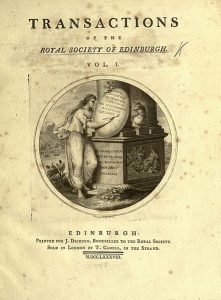1 What is Peer Review?
Introduction

Peer review is often seen as the proverbial bread and butter of ensuring quality in academic research and its publications. It is a process that has been used to validate and improve research submitted for publication, and proposals submitted for grant funding. While it has changed over time, particularly in the 21st century, peer review was first developed in the aristocratic learned societies and royal academies of the eighteenth century.
This lesson will provide a historical context of peer review, an overview of its current status, and an exploration of the many human roles of a peer review process. It will also allow you to reflect upon your own understandings of peer review, and offer you the opportunity to grow those understandings.
At the end of this module you should be able to:
- Summarize a basic peer-review process
- Identify personal knowledge gaps with peer review
- Discover new information about peer review
- Examine your own understandings of the peer-review process.
Activities and Exercises
 Do: Free Write (1:1)
Do: Free Write (1:1)
Set a timer for five minutes and write down (or record yourself thinking aloud) everything you know about peer review. After your five minutes are up, read (or listen to) what you wrote or said. Write down three questions you have about peer review. Save these questions; you’ll use them later.
 Watch: The Peer Review Process (1:2)
Watch: The Peer Review Process (1:2)
This American Chemical Society video, The Peer Review Process, offers a two-minute explanation of the peer-review process.
 Read: Modern Peer Review (1:3)
Read: Modern Peer Review (1:3)
Read the blog post, The Birth of Modern Peer Review, by Hadas Shema on the Scientific American blog, Information Culture, and “Peer Review and Academic Prestige” (pages 12-13) in Untangling Academic Publishing by Aileen Fyfe and co-authors.
 Do: Peer Review Flow Chart (1:4)
Do: Peer Review Flow Chart (1:4)
Create a flow chart depicting a typical peer-review process. Your flow chart should account for rejection, revisions, and acceptance. It should also indicate the players in each process. (e.g. editor, referee, author, or any other folks). After completing your flow chart, show it to a colleague/mentor/peer/friend/someone and discuss it with them. Reflecting upon your discussion, modify your flow chart based on any new understandings you gained.
Keep this flow chart; you will use it again in subsequent modules.
 Read: Roles in Peer Review (1:5)
Read: Roles in Peer Review (1:5)
Read Chapter 4,“Roles of Peer Review” (pp. 53-90) in Stories of Open by Emily Ford. (It seems like a lot of reading, but really it’s not!)
 Do: Research Your Question (1:6)
Do: Research Your Question (1:6)
Pick one of the questions you wrote down about peer review in the first activity (1:1), and spend 10-15 minutes researching the answer. A basic web search is enough. This activity is about engaging in a discovery process, even if your question isn’t answered.
 Do: Free Write
Do: Free Write
Set a timer for 5 minutes and write (or record yourself thinking aloud) about what you’ve learned. Need a writing prompt? Try one of these:
- A typical peer review process is…
- I was surprised to learn that…
- I expected peer review to be…
- Some problems in peer review seem to be…
References
American Chemical Society. (2019, March 8). The peer review process [Video]. YouTube. https://www.youtube.com/watch?v=DWzKI4WhSPQ
Ford, E. (2021). Stories of open: Opening peer review through narrative inquiry. https://www.alastore.ala.org/content/stories-open-opening-peer-review-through-narrative-inquiry-acrl-publications-librarianship or https://archives.pdx.edu/ds/psu/36043
Fyfe, A., Coate, K., Curry, S., Lawson, S., Moxham, N., & Røstvik, C. M. (2017). Untangling academic publishing: A history of the relationship between commercial interests, academic prestige, and the circulation of research. University of St. Andrews. https://doi.org/10.5281/zenodo.546100
Shema, H. (2014). The Birth of Modern Peer Review. Information Culture. https://blogs.scientificamerican.com/information-culture/the-birth-of-modern-peer-review

